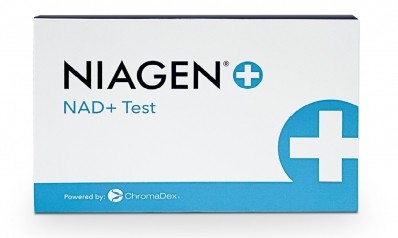Animal Biosciences develops supplements to promote longevity in dogs

The company, which was founded in 2017 by Harvard genetics professor David Sinclair, said the supplement Leap Years was developed by using a novel approach that addresses hallmarks of cellular aging—cellular senescence, mitochondrial dysfunction and epigenetic changes—to improve healthspan.
“For dogs, healthspan refers to the portion of [the dogs'] lives during which they remain healthy and free from significant illnesses or disease,” said Ginny Rentko, chief veterinary medical officer at Animal Biosciences. “Just like with humans, it’s about focusing on the quality of life, not just the quantity. A longer healthspan in dogs means they can enjoy more quality time with fewer health issues as they grow older.”
Hallmarks of aging
Nearly 300,000 journal articles have been published since 2013 outlining the hallmarks of aging, although defining them can be a challenge, according to Spanish researcher Carlos Lopez-Otin and his European colleagues.
In a 2023 review published in the journal Cell, the researchers wrote that classifying these parameters was “inevitably arbitrary” but suggested nine molecular, cellular and systemic hallmarks of aging: DNA instability, telomere attrition, epigenetic alterations, loss of proteostasis, deregulated nutrient-sensing, mitochondrial dysfunction, cellular senescence, stem cell exhaustion and altered intercellular communication.
“Recent research has confirmed and extended the importance of all these hallmarks,” the researchers noted. “They have withstood scrutiny by tens of thousands of aging researchers, but they require an update to deal with the discoveries of the last decade.”
They added that each of the hallmarks should be considered “as a point-of-entry for future exploration of the aging process, as well as for the development of new anti-aging medicines.”
How Leap Years works
Leap Years is a two-part cellular health system to slow the effects of aging in dogs. Although the company does not reveal the proprietary composition of the supplement, the dual combination does include an NAD+ booster, the small molecules that increases the levels of the coenzyme NAD in the body which determine the speed of the aging process. The product also contains a senolytic, a class of small molecules that may selectively induce the death of senescent cells, those that have aged and permanently stopped dividing, but do not die.
Animal Biosciences chose an NAD+ booster and senolytic after it studied the bioavailability, pharmacokinetics and safety in dogs and the product’s stability.
“The real value of this combination lies in the clearance of senescent cells which consume high concentrations of NAD,” Rentko said. “Supplementation with the NAD precursor can then be utilized by healthy cells.”
To support the company’s claims, Animal Biosciences said it is not solely relying on data from human longevity and healthy aging studies as many pet supplement companies do. A double-blind, placebo-controlled trial in dogs conducted by North Carolina State University researchers evaluated measures of cognition, frailty and activity levels after the animals supplemented with Leap Years, results of which were published in Nature.
The researchers found that cognitive decline not only was delayed in the dogs, but consumption of Leap Years improved their cognition over a 90-day period when assessed by the owner-reported Canine Cognitive Dysfunction Rating (CCDR) scale. Regarding frailty, a lower percentage of dogs in the treatment groups deteriorated than in the placebo group, however this difference was reported as not significant. The study found no difference between groups in changes in activity level, gait speed or in-house cognitive testing.
The researchers acknowledged study weaknesses including that no attempt was made to target dogs who exhibited higher levels of senescence or lower levels of NAD. In addition, biomarkers of senescence and NAD+ levels were not measured.
“Future studies may benefit from incorporating these biological markers as outcomes,” they noted, adding that more research is needed to understand the influence of clinical interventions on canine aging.
In addition to this preliminary study, Rentko said that Animal Biosciences draws on the work of Dr. Sinclair, whose science explores why people age and how to slow its effects. His work on NAD+ and sirtuins, proteins that regulate metabolism and are involved in many biological processes, has shown that NAD boosters provide numerous health benefits in mice and in humans, including lifespan extension in mice.
“We cite human research studies because the field of longevity and healthy aging is more advanced in humans than it is in companion animals,” Rentko said. “The relevance is that both species are mammals and therefore have similar cellular metabolism as well as the fact that dogs share the same living environment as people.”















